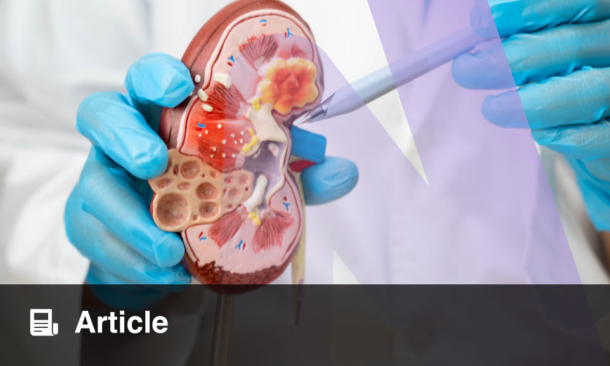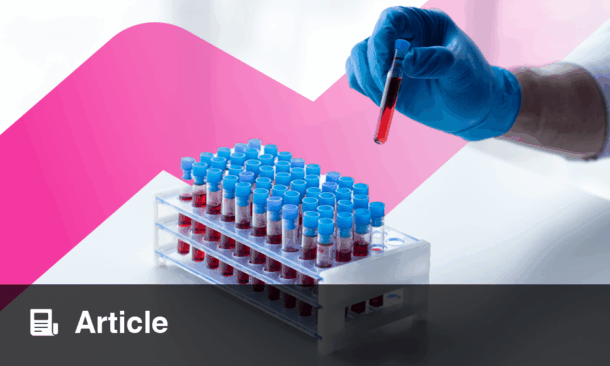Abstract
Diabetes is a chronic metabolic disorder characterised by insulin resistance and impaired insulin secretion. Effective management of diabetes requires sustained blood glucose control, often necessitating long-term medication adherence. Traditional drug delivery systems, while effective, often face challenges such as poor bioavailability, patient noncompliance, and undesirable side effects. This paper explores the advancements in novel drug delivery systems specifically tailored for antidiabetic drugs. Different nanoparticles such as polymeric nanoparticles, nanocarriers, liposomes, and lipid nanoparticles are used in the novel drug delivery systems for antidiabetic drugs. These systems showed potential in enhancing drug efficacy, improving pharmacokinetics, and reducing side effects. The integration of nanotechnology and personalised medicine is also discussed for these delivery systems, providing insights into their role in achieving better glycaemic control. The review concludes with a discussion on the current challenges and future prospects of novel drug delivery systems in diabetes.
Key Points
1. Diabetes is a global health challenge, with millions of patients struggling to achieve effective and sustained glycaemic control. Traditional treatments are often limited by poor bioavailability, suboptimal pharmacokinetics, and side effects. This article addresses how novel, nanomedicine-based drug delivery systems could make diabetes treatment more effective, targeted, and patient-friendly.
2. This article comprehensively covers various nanotherapeutic strategies employed in the treatment of diabetes. It also explores the role of various nanoparticles, including polymeric nanoparticles, nanocarriers, liposomes, and lipid-based nanoparticles, in enhancing the delivery and efficacy of antidiabetic drugs.
3. R Nanomedicine represents a breakthrough approach in diabetes management by enabling smarter, more targeted drug delivery systems. These novel nanotherapeutic systems could lead to safer, more effective, and more patient-friendly diabetes management.
INTRODUCTION
Diabetes is a chronic metabolic disorder characterised by persistently high blood sugar levels (hyperglycaemia) caused by deficiencies in either insulin secretion, insulin action, or both. The impaired glucose metabolism can lead to long-term complications that affect various organs. Millions of people worldwide live with diabetes and require constant blood glucose control, which makes care particularly challenging. Traditional drug delivery methods, such as oral tablets and injectable formulations, have consistently been the main therapeutic options for diabetes treatment. However, these approaches come with significant drawbacks, such as suboptimal bioavailability, frequent dosing requirements, inefficient drug absorption, issues with patient compliance, and unwanted side effects. These limitations often result in reduced therapeutic effectiveness and patient discomfort. Consequently, there is a growing demand for advanced drug delivery systems that can boost the efficacy of treatments, decrease the frequency of doses, and minimise adverse reactions.
Recently, innovative drug delivery methods have surfaced as alternatives to traditional approaches, offering more effective treatments for diabetes. These cutting-edge systems, including nanoparticles, microneedles, transdermal patches, and smart drug delivery mechanisms, have demonstrated the ability to enhance drug stability, target specific tissues, and provide controlled drug release. These advancements enhance the pharmacokinetic and pharmacodynamic profiles of antidiabetic drugs and offer the potential for personalised treatment strategies.
This paper explores the latest advancements in these innovative delivery systems, focusing on how nanoparticles, such as polymeric nanoparticles, liposomes, and lipid-based carriers, are being synthesised and developed to optimise the delivery of antidiabetic medications. Studies of these methods showed improvements in drug efficacy and pharmacokinetics, as well as reduced side effects. The integration of nanotechnology and personalised medicine lays the groundwork for improved glycaemic control in future diabetes treatment. The paper examines various drug delivery methods, including their mechanisms, advantages, and limitations, as well as their potential to improve patient outcomes.
NANOMATERIALS USED IN THE MANAGEMENT OF DIABETES
Polymeric Nanoparticles
Polymeric nanoparticles (PNP) are made from polymers and typically measure between 1 and 1,000 nanometres. These tiny particles come in two forms: nanospheres, which are solid, and nano-capsules, which have a polymeric outer layer surrounding a liquid or solid core.1 PNPs possess remarkable characteristics, such as an exceptionally high ratio of surface area to volume, tuneable dimensions, and the capacity to envelope various therapeutic agents. These properties make PNPs suitable in drug delivery, medical imaging, and other biomedical applications.2,3
The structure of PNPs is significantly influenced by their synthesis methods, which can include solvent evaporation, coacervation, and self-assembly techniques. When amphiphilic block copolymers go through self-assembly, they can form structures called micelles or vesicles, which can play a crucial role in drug delivery.4 PNPs can be designed to incorporate stimuli-responsive agents for controlled drug release, triggered by environmental changes such as temperature or pH fluctuations.5,6 This adaptability enhances their effectiveness in targeting specific tissues while minimising side effects.
The surface modification of PNPs can be done through various chemical strategies in order to improve their biocompatibility and targeting capabilities.2,7 These nanoparticles are special because of their unique structural properties and ability to be engineered for different applications. Advances in the application of PNPs could unlock new therapeutic approaches to the treatment of diabetes and other diseases.2,3
Polymeric Nanocapsules
Polymeric nanocapsules are nanostructures that consist of a core-shell architecture, where the liquid or solid core is encapsulated by a polymeric shell. This unique structure distinguishes them from polymeric nanospheres, which are composed of a solid polymeric matrix without a core.8 The core of polymeric nanocapsules can be composed of various materials, including oils, drugs, or other active compounds, while the shell is generally made from biocompatible polymers such as poly(lactic-co-glycolic acid) and poly(alkylcyanoacrylate).9 The choice of materials for both the core and shell is crucial, as it influences the release kinetics, the nanocapsule’s stability, and the overall functionality in different applications.10
Nanocapsules can be synthesised through various methods, including miniemulsion polymerisation, interfacial polymerisation, and layer-by-layer assembly.11,12 Miniemulsion polymerisation allows for the formation of nanocapsules with controlled sizes, typically below 100 nm, which is essential for biomedical applications.13 In the controlled drug delivery systems, the polymeric shell can act as a diffusion barrier for the release of the encapsulated core material, which is particularly beneficial.10 Nanocapsule properties can be tailored through chemical modifications by using different polymer blends to enhance their performance.14,15
The structural characteristics of polymeric nanocapsules play a vital role in their functionality by providing a protective environment for the encapsulated materials. This can enable the responsive systems to release their contents in response to specific stimuli, such as pH or temperature changes.16,17 This responsiveness is particularly advantageous in targeted drug delivery, where the release of therapeutic agents can be controlled according to the physiological conditions of the target sites.9,10 Their properties can also be modified to improve biocompatibility and targeting capabilities for better therapeutic efficacy.18,19
Liposomes
Liposomes are spherical vesicles composed of lipid bilayers used in drug delivery and other biomedical applications. The structure of these nanoparticles is defined by lipid composition, which influences their physicochemical properties such as size, charge, fluidity, and stability. The lipid bilayer typically consists of phospholipids, which are often modified with various components to enhance their function. A recent study shows significant effects on membrane fluidity and permeability by incorporating cholesterol into liposomes, impacting drug release rates.20
Liposomes are synthesised through a self-assembly process, wherein lipids are organised into bilayers in an aqueous environment. This process can be affected by various factors, such as lipid concentration, temperature, and the presence of other additives. Certain techniques, such as micromixing in acoustic fluids, have recently shown precise control over liposome sizes and shapes, allowing them to be specifically tailored for targeted drug delivery.21,22 The interaction of liposomes with biological systems is also critical for their design. When biological fluids enter them, liposomes form a protein corona and alter their biodistribution. The corona is influenced by the liposomes’ surface charge, hydrophobicity, and surrounding proteins.23-25 Cationic liposomes attract negatively charged proteins, which can allow or inhibit cellular uptake depending on the specific interactions with the target cells.26
In studies, these nanoparticles are incorporated into liposomal structures, which have proven to enhance their functionality. They can be embedded within the liposomal bilayer, which provides additional properties like magnetic or photothermal responsiveness. For example, magneto-liposomes have been prepared to target drug delivery and imaging applications, where the magnetic properties can provide controlled transport of the liposomes.27,28 The structure of liposome nanoparticles is complex, with lipid composition, size, and surface collectively influencing their efficacy as drug delivery vehicles.
Lipid Nanoparticles
Lipid nanoparticles (LNP) are known as adaptable vehicles for delivering drugs, especially genetic material and therapeutic compounds. LNPs are similar to liposomes in structure, but are distinct due to their single phospholipid layer, unlike the multilayered structure of liposomes.29 LNPs feature reversed micelles within their core, which is comprised of a lipid centre surrounded by a lipid bilayer. This structure can be modified to boost stability, encapsulation efficiency, and bioavailability of enclosed drugs. The core-shell design is vital for the function of these nanoparticles, influencing their interaction with biological systems and the efficacy of drug delivery.30 The lipid bilayer of LNPs consists of various lipids, including phospholipids, cholesterol, and ionisable lipids, each serving a specific purpose in the formation and stability of nanoparticles. Ionisable lipids are crucial for binding mRNA, creating a central structure that is subsequently wrapped by helper lipids, such as phospholipids and cholesterol. These helper lipids strengthen the nanoparticle and help it enter cells more easily.31 Research also indicates that adjusting the crosslinking density of the hydrogel core can alter the elasticity of nanoparticle cores, which in turn can attract proteins from the biological surroundings.32 The physical characteristics of LNPs, such as their flexibility and dimensions, play a crucial role in determining their circulation lifetime and how they interact with biological barriers.
GLUCOSE-SENSITIVE DRUG DELIVERY
The glucose-sensitive drug delivery systems gained a significant advancement in diabetes management, particularly for insulin delivery. These systems are designed to respond dynamically to changes in blood glucose levels, which can mimic the natural insulin secretion by the pancreas. The use of phenylboronic acid (PBA) as a glucose-sensitive component, which binds with glucose by forming reversible covalent bonds, allows changes in the hydrophilicity of the drug delivery vehicle. The disassembly or swelling of the delivery system facilitates the release of drugs in response to elevated glucose levels.33-35 For instance, PBA-based micelles have demonstrated enhanced glucose-responsiveness at physiological pH, making them suitable for insulin delivery.36,37 The integration of PBA into polymeric structures has also demonstrated the ability to create self-regulating systems that can efficiently manage insulin release with minimal patient involvement.38
The incorporation of glucose oxidase in the drug delivery systems has also been promising. Glucose oxidase catalyses the oxidation of glucose and produces hydrogen peroxide. This lowers the local pH, which can trigger the release of drugs by pH-sensitive carriers.39,40 This is a dual-responsive system for glucose-triggered insulin release that can enhance the therapeutic efficacy of the treatment.41 The combination of glucose oxidase with other materials, such as PBA, also demonstrated a multifunctional system that can effectively integrate glucose sensing and drug release functions.42
The application of nanotechnology has been crucial in advancing glucose-sensitive drug delivery systems. The development of nanocarriers, such as supramolecular vesicles and hybrid nanogels, has allowed for higher drug loading and better release under normal physiologic conditions.43 In a recent study, glucose-responsive supramolecular vesicles were engineered to release insulin in a controlled manner, showing great promise for practical use in diabetes treatment. These systems can be designed to work with specific body triggers, making them more effective and reducing the need of frequent injections.34,44 The nanocarriers can hold and transport genetic material, such as small interfering RNA, which could be a new approach in tackling the underlying causes of Type 2 diabetes, including problems with insulin response and pancreatic β-cell dysfunction.45,46 Biogenic synthesis of nanoparticles has also gained recognition as a safe and effective approach for creating antidiabetic agents in recent studies. This innovative method significantly broadens the therapeutic options available for combating diabetes.47,48
Various nanoscale materials have been utilised in glucose-sensitive drug delivery and improving insulin sensitivity using various methods markers.49,50,47
DRUG DELIVERY USING NANOPARTICLES IN ORAL ADMINISTRATION
Oral administration of insulin is generally challenging due to instability in the gastrointestinal tract and poor absorption. Recent advancements in nanotechnology showed promising solutions, using various nanoparticles to protect insulin, enhance absorption, and improve pharmacokinetics. These advancements aim to increase the bioavailability of orally administered insulin.
Chitosan (a natural polysaccharide that is biocompatible, biodegradable, and hydrophilic) nanoparticle-based systems have been widely explored regarding oral insulin delivery. These nanoparticles have shown promise in controlling blood sugar in diabetes studies. Research has found that chitosan-pentasodium tripolyphosphate nanoparticles can keep blood glucose levels steady for up to 11 hours after giving insulin at a dose of 100 IU/kg.51 Researchers have also investigated using other natural polymers, like hyaluronic acid and alginate, to boost insulin’s stability and uptake. For instance, chitosan nanoparticles coated with hyaluronic acid have demonstrated enhanced transcellular insulin delivery, which can effectively overcome the obstacles posed by the intestinal mucosa.52 Nanoparticles that are pH-responsive also offer a novel method for oral insulin delivery. Scientists have created poly(ester amide) microspheres, and their biodegradability and hydrophobic nature proved to interact with intestinal epithelium. This interaction prolongs insulin’s presence in the gut and can improve its absorption.53 An approach with self-assembled lecithin/chitosan nanoparticles has shown improved functionality and enhanced delivery effectiveness in oral insulin administration.54
Understanding mucus barriers when designing nanoparticles is crucial, as they can penetrate these barriers and become trapped. Research has shown that hydrophilic and electroneutral nanoparticles can be used to overcome this through better absorption.55 Nanoparticles functionalised with zwitterions have been tested for oral bioavailability against absorption barriers, showing even more improvements.56 Zinc oxide nanoparticles have also shown the ability to traverse biological membranes, making them suitable for antidiabetic oral drug delivery.57
Oral nanoparticle drug delivery systems have shown great promise in improving bioavailability and efficacy.32,58 Research on these nano-formulations reveals that nano-encapsulated insulin has a much higher oral bioavailability than free insulin, demonstrating the enhanced effectiveness of nanoparticles in insulin delivery.59 Studies have shown that insulin-loaded nanoparticles can produce long-lasting blood sugar-lowering effects in diabetic animal models, suggesting their potential for practical use in humans.60
GENE THERAPY USING NANOSCALE MATERIALS
In diabetes treatment, the application of nanoparticles in gene therapy has been explored, and in many studies, they have emerged as a pivotal technology. Gene therapy aims to either fix faulty genes or replace them with healthy ones so that the body is capable of fighting off the disease. It is promising as a treatment for a wide range of diseases, including diabetes. The application of nanoparticles in gene therapy offers several advantages, including enhanced delivery efficiency, reduced toxicity, and the ability to target specific tissues or cells. Researchers have utilised several types of nanoparticles in antidiabetic gene therapies for their unique therapeutic potentials.
The advantage of using nanoparticles in gene delivery is that they are capable of encapsulating genetic material like small interfering RNA and plasmid DNA, which can alter specific gene expression linked to diabetes. Lipid nanoparticles have shown potential in suppressing tumour necrosis factor α, which is a protein involved in diabetic wound healing.61 A significant improvement in the efficacy of gene therapy was reported using engineered chitosan nanoparticles for targeted gene transfer functions.54 These modified nanoparticles can improve targeting and biocompatibility in patients with diabetes. Research also shows that glucose metabolism can be regulated by therapeutic genes delivered effectively using nanoparticles. Insulin plasmid-loaded nanoparticles were administered orally in diabetic mice, which sustained therapeutic gene expression and reduced hyperglycaemia significantly.62 This method addresses the challenges faced by traditional insulin injections and improves patient compliance as it can provide a non-invasive alternative.63 Biologic nanoparticles derived from a specific medicinal plant (Momordica Charantia) extract have been studied for their ability to influence gene expression involved in lipid metabolism and nephrotoxicity in diabetes models, offering potential therapeutic applications.64
Lipid-based nanocarriers were also investigated for their encapsulating capabilities and utilised in gene therapy to combat inflammatory cytokines in the chronic wound healing process in patients with diabetes.65 The application of gene-activated collagen scaffolds, functionalised with polyplex nanoparticles carrying specific genes, has also shown potential in enhancing the regenerative capabilities of human adipose-derived stem cells in patients with diabetes.66 In a recent study, silver nanoparticles have also been recognised for their therapeutic potential in diabetes treatment. Their distinct physical and biochemical properties have been observed in response to inflammation, as well as in boosting insulin sensitivity.67 Combining these nanoparticles with traditional antidiabetic therapies improved outcomes in preclinical studies, although the combined impact requires further study.68 These innovative approaches could potentially revolutionise the gene therapy methods in various aspects of diabetes management.
NANOPARTICLES IN STEM CELL THERAPY
Cell therapy represents a promising frontier in the treatment of diabetes. Stem cell therapy is primarily used to restore and increase the function of β-cells responsible for insulin production, reduce complications, and improve the wound healing process in diabetes patients. These insulin-producing β-cells can be regenerated by using stem cell therapy. Studies indicated that the successful differentiation of mesenchymal stem cells into insulin secreting cells has been shown. These mesenchymal stem cells, derived from tissues such as bone marrow and adipose tissue, can offer a potential cure for diabetes.69,70 The regenerative abilities of mesenchymal stem cells are especially significant in Type 1 diabetes, as β-cell destruction is caused by autoimmune responses. Stem cell therapy can also promote neovascularisation along with β-cell regeneration, which is critical in improving insulin production and glycaemic control.71-73 A recent clinical trial showed significant improvements in diabetic wound healing associated with chronic ulcers.74-76 Despite these promising results, there are significant concerns regarding the impairment of stem cells, which could potentially alter their functionality in patients with diabetes and limit their therapeutic capabilities.77,78 In the case of patients with autoimmune diabetes, studies showed risks of rejection caused by immunogenicity of transplanted cells.79
To further enhance stem cell therapies and reduce risks, nanoparticles have been combined with stem cells to improve cellular response and delivery in recent studies. The unique properties of the nanoparticles can also allow for enhanced delivery and tracking of stem cells. Magnetic nanoparticles have been used to transport stem cells to specific tissue sites, such as post-surgical myocardium for regeneration, especially in patients with both diabetes and cardiovascular conditions.80,81 Nanoparticles improve cell culture by utilising 3D nanofiber scaffolds and enhancing cardiomyocyte growth. Gold nanoparticles and poly(lactic-co-glycolic acid)-derived microparticles also promote stem cell survival.82 The use of polymeric nanoparticles in stem cell therapies can influence their biological behaviours by altering differentiation pathways, which is beneficial under the cellular stress that is common in diabetes.83 The research on stem cell therapies for diabetes using different nanoparticles has opened the door to better treatment options.
NANOPARTICLES IN DIABETIC WOUND HEALING
Wound healing in patients with diabetes is a continuous, programmed process of events. In diabetic wound healing, nanoparticles and nanocomposites improve the repair process by delivering growth factors or antimicrobials to the wound site. They reduce inflammation, prevent infection, and promote tissue regeneration, which speeds up recovery. Some nanoparticles have shown intrinsic antibacterial properties that are crucial for infection prevention in diabetic wounds. For instance, significant antibacterial activity was reported from zinc-based nanoparticles against common pathogens such as Escherichia coli and Staphylococcus Aureus, which are the main causes of wound infections in patients with diabetes.84 Cerium oxide nanoparticles, which are inorganic compounds, were used in several formulations to progress wound healing by promoting their antioxidant properties and reducing oxidative stress.85,86 The incorporation of such nanoparticles into wound dressings could effectively facilitate a more conducive healing environment and reduce the infection.
The application of nanoparticles extends to their ability to modulate the wound healing process. Gallocatechin-silver nanoparticles embedded in cotton gauze have been used to accelerate diabetic wound healing in rats by inhibiting apoptosis with the Wnt/β-catenin signalling pathway and promoting cell proliferation.87 Lipid-based nanocarriers have been studied for their capacity to deliver growth factors and anti-inflammatory drugs to facilitate an accelerated healing response.65,88 Utilising these targeted delivery methods can significantly improve the bioavailability of drugs.
Thermosensitive hydrogels with nanoparticles can remove reactive oxygen species, which obstruct the healing process, and provide a moist environment to aid in healing. In a recent study, Prussian blue nanoparticles were incorporated into hydrogels, which promoted angiogenesis and restored mitochondrial function in the diabetic healing process.89 The dual action of reactive oxygen species removal and modulation of cellular functions is critical in managing the oxidative stress observed in diabetic wounds. The use of microneedle patches and multifunctional nanocomposite scaffolds has been developed to further enhance diabetic wound healing. These innovative delivery systems can provide controlled drug release while facilitating the regeneration of tissue.90,91 Moreover, chitosan-coated nanoparticles have recently been shown to act on cytokine profiles in diabetic models, which can play a role in modulating immune response and reducing inflammation in diabetes.92
CONCLUSION
The use of nanotechnologies shows great promise in the advancement of innovative treatment approaches and offers significant potential to transform diabetes treatment. This review has explored the use of various nanomaterials, including polymeric nanoparticles, liposomes, lipid nanoparticles, and their variations, which have demonstrated key benefits. These include targeted drug delivery, controlled drug release, improved drug absorption, enhanced diabetic wound healing, and immune modulation. These advantages address many limitations of conventional diabetes therapies, particularly by ensuring better precision and efficacy.
Incorporating glucose-responsive mechanisms into nanomaterials has opened doors for adaptive drug delivery systems that respond to blood sugar fluctuations. These systems improve drug discharge, minimising the risks of hypoglycaemia or hyperglycaemia. Nanoformulations can also protect insulin from degradation, enhancing its bioavailability and absorption, which could overcome current challenges in oral insulin delivery. Using nanoparticles in oral therapies could reduce the need for invasive delivery methods, improving patient adherence. The combination of nanotechnology with gene and stem cell therapies is particularly promising, offering opportunities to regenerate damaged tissues, which can also enhance insulin production and address the underlying causes of diabetes.
However, there are some challenges to overcome. Large-scale nanoparticle manufacturing remains complex and costly, with concerns regarding toxicity, immune reactions, and long-term effects. Some nanoparticles may have a related risk of toxicity, and they can accumulate in different organ tissues. Nanomaterials can also trigger immune reactions with long-term use, which may affect their efficacy and needs better understanding through clinical trials. These issues contribute to delays in regulatory approval. These novel approaches are still experimental and have not received FDA approval for clinical use just yet. Ongoing research and clinical trials are crucial to improving the safety, biocompatibility, and cost-efficiency of these therapies. Despite the hurdles, the potential of nanotechnology to advance diabetes care is immense. With continued progress in clinical trials and manufacturing processes, nanomedicine could offer groundbreaking therapies, which will improve patient outcomes and quality of life. The integration of nanotechnologies may reshape the future of diabetes management and provide long-term solutions for millions of patients worldwide.







